
| Pearls are a concentric concretion found in shallow cave pools. They
can be spherical, as in these photos, or cylindrical, elliptical, and
even cubical (as in the additional photos in the table below. They range
in size from barely larger than a sand grain up to golf-ball sized. In
the tropics, large beds of them may be found. Grutas de Canicas, a cave
recently explored in Mexico, contained pearls esitmated in the millions. Cave pearls form when water dripping into the pool loses carbon dioxide and precipitates calcite. This precipitate usually forms around a nucleus of sand, bones, or fragments of soda straws or rafts. The typical roundness is due to the uniform growth of the pearl, not to any sort of rotation due to dripping. A sphere allows the greatest amount of deposition for the smallest surface area and is thus most likely, even if the nucleus is highly irregular. The dripping causes vibrations in the pool which may prevent the pearls from cementing (with calcite) to the pool floor, though many pearls are found cemented in. Sometimes excess precipitate will form cups or nests around the pearls, like in the photo on the top. |

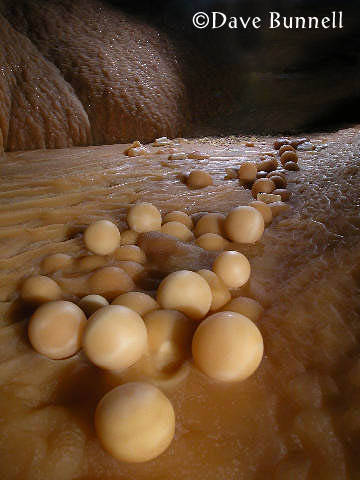
 manganese tinted pearls |
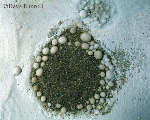 pearls around a drip ring |
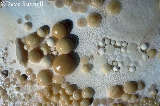 pearls of various shapes |
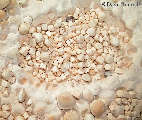 Cubic pearls |
 large pearls in a nest |
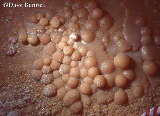 pearls engulfed in flowstone |
Choose a thumbnail to see more images of cave pearls.
![]()
| Back to: | |
 |
Created: November 17, 1995 Last Updated: May 4, 2005 Author: Dave Bunnell |